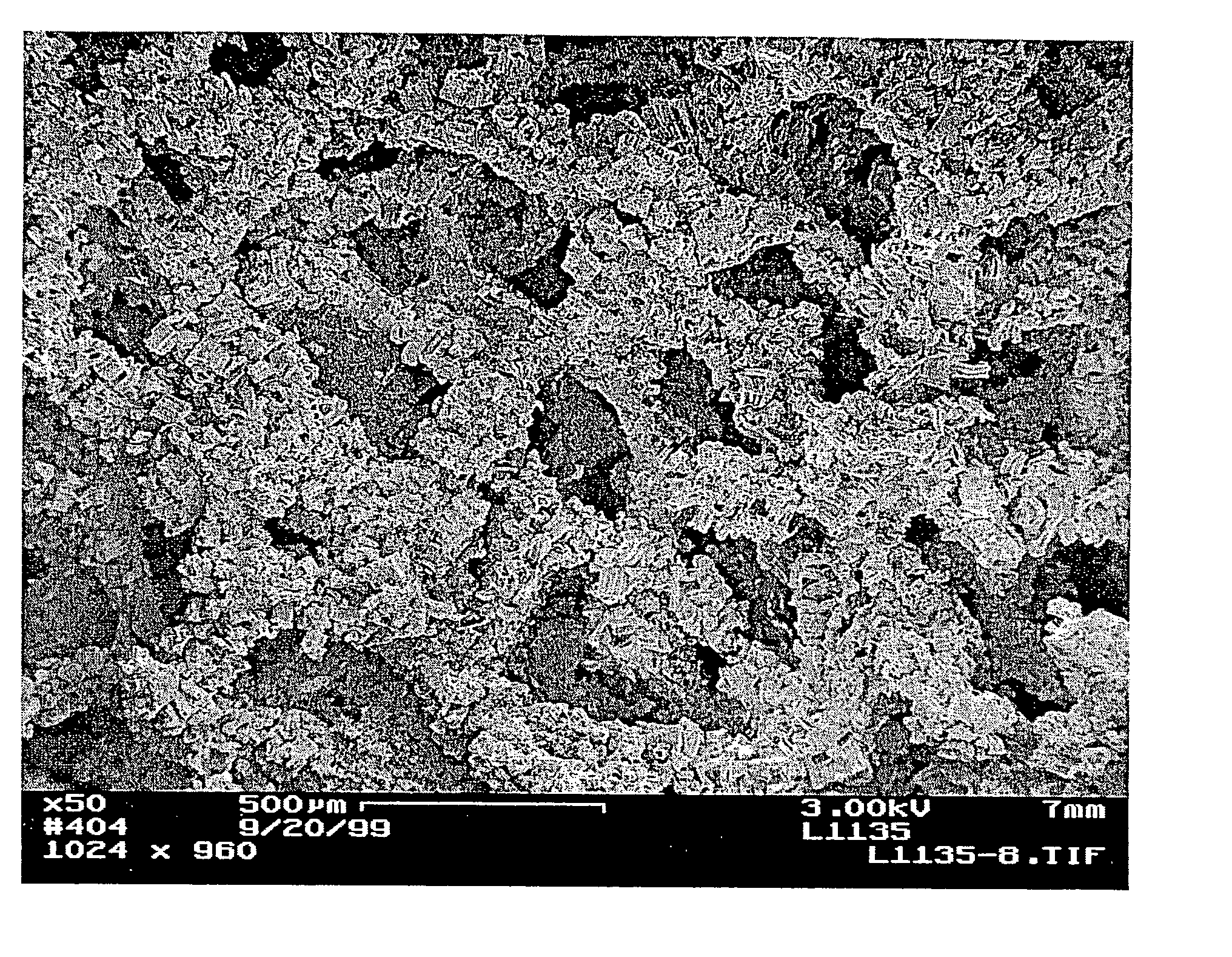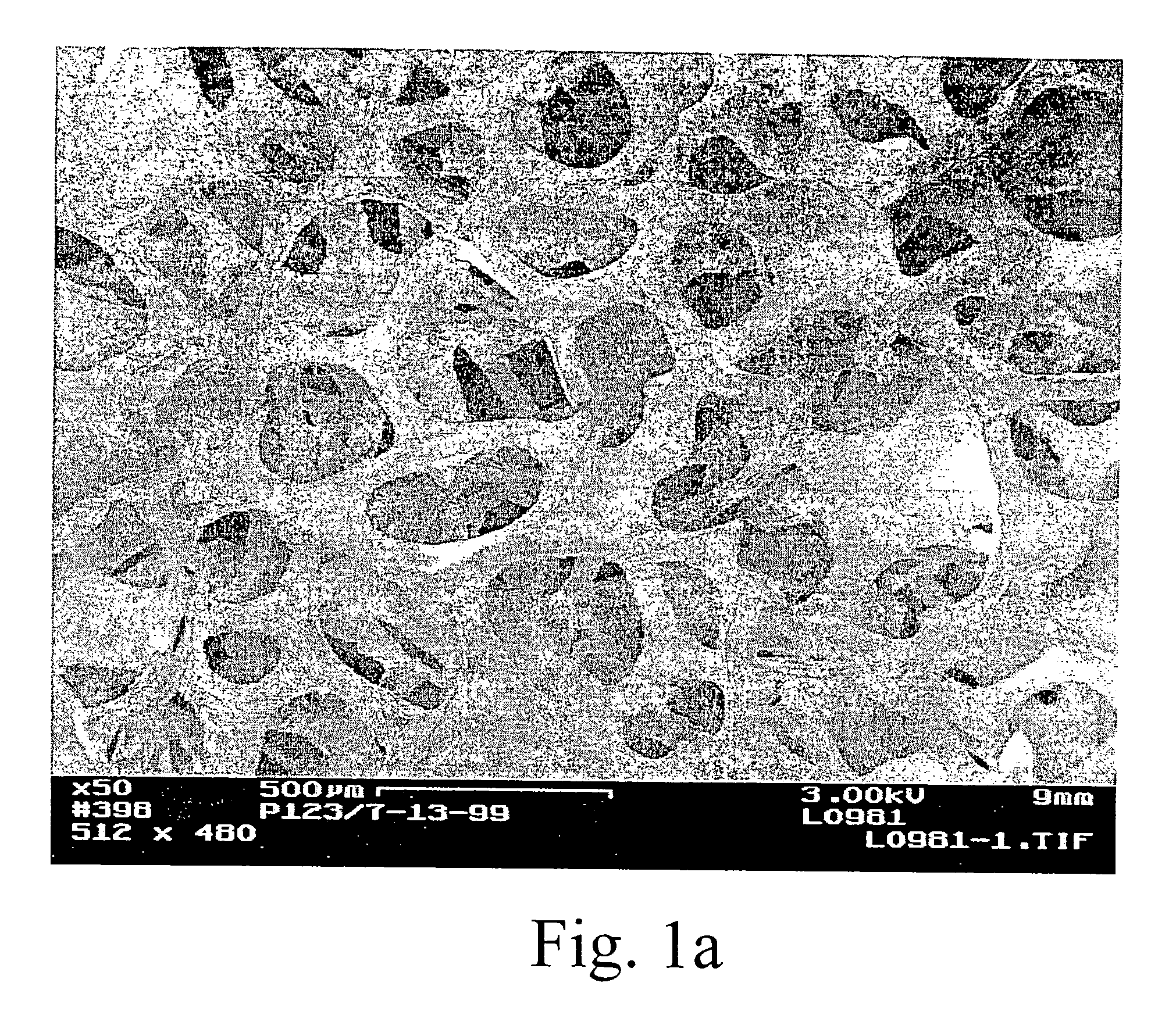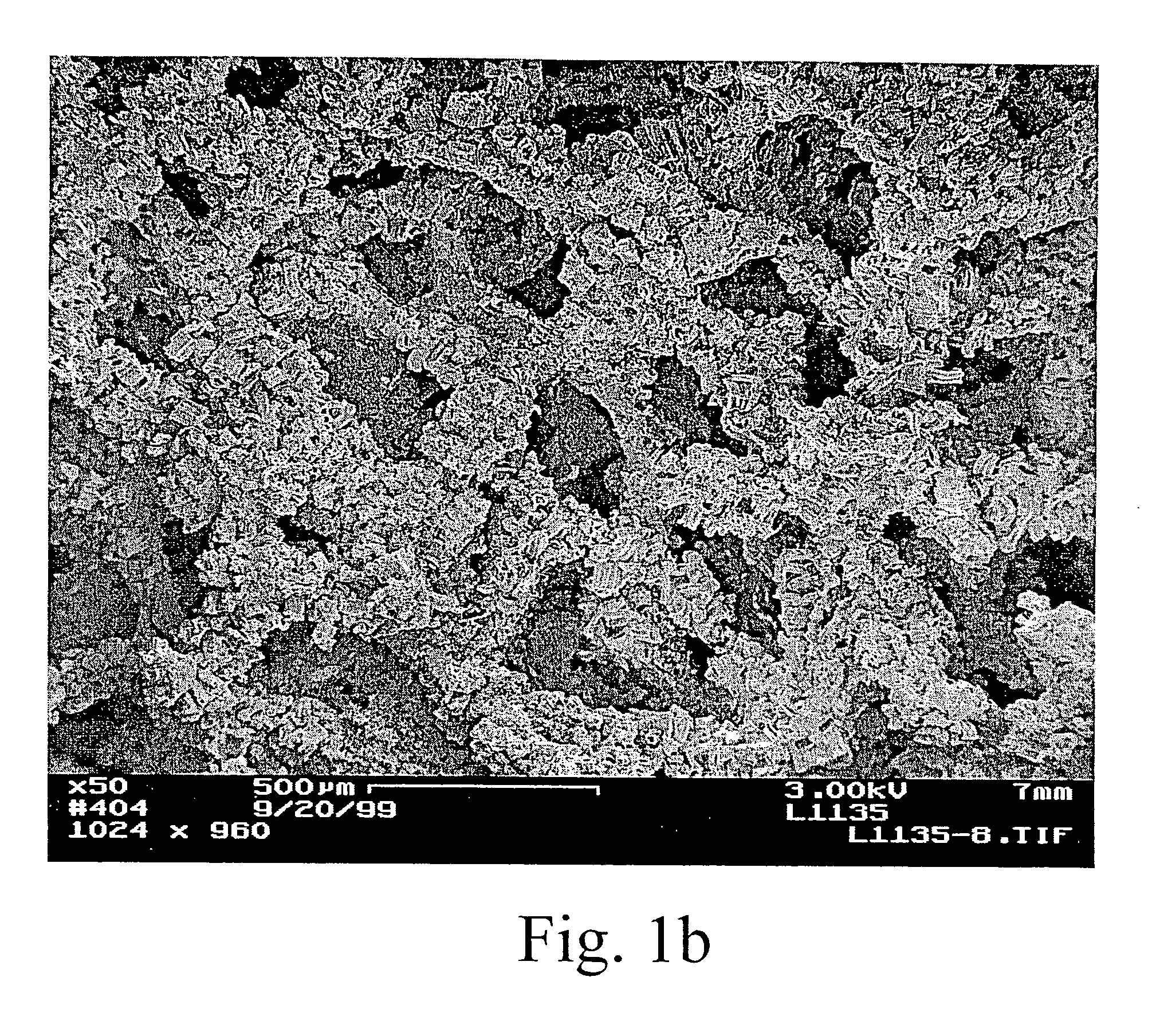[0013] The invention also provides processes of using
carbon nanotube-containing structures. Preferably, any of the
carbon nanotube-containing structures described herein can be used in processes or devices including:
catalysis, adsorption,
ion exchange, separation of chemical components,
filtration, storage of gases (for example,
hydrogen or
carbon dioxide),
distillation (including
reactive distillation), a support structure for chemical, including biological, sensors, a support structure to immobilize proteins for bioprocessing, and a component in a
heat exchanger. Features of carbon
nanotube-containing structures that make these structures particularly advantageous include:
high surface area, excellent
thermal conductivity, capillary force for enhanced condensation, and good attractive force for certain organic species.
[0015] Similarly, the invention provides a method of separating a chemical component from a mixture of components. “Mixture” also includes solutions, and “separating” means changing the concentration of at least one component relative to the concentration of at least one other component in the mixture and preferably changes the concentration of at least one component by at least 50% (more preferably at least 95%) relative to at least one other component, for example, reducing the concentration of a 2M feed
stream to 1M or less. Particular types of separations include
filtration,
selective adsorption,
distillation and
ion exchange. Filtering can be accomplished, for example, by passing a mixture having at least two phases through a
porous carbon nanotube-containing structure where at least one of the phases gets physically caught in the structure. A carbon nanotube-containing structure with surface-exposed carbon nanotubes can function efficiently for the separation of some organics because the nanotubes can be hydrophobic while organics can be adsorbed quite well. For
ion exchange it is desirable to coat the surface with an
ion exchange agent.
[0016] The preparation of porous materials, such as foams, coated with carbon nanotubes and a high-surface area
metal oxide coating, can be difficult. The locally aligned nanotubes exhibit
high surface Van der Waal forces and hydrophobic properties. Conventional wash
coating of
metal oxides using aqueous based solution often results in a non-uniform
coating or poor adhesion onto the nanotubes. We have developed treatment methods to modify the surface properties of the nanotubes, making this new class of materials possible for a variety of important industrial applications such as engineered catalyst structures. The invention has particular utility in the chemical (including biological),
fossil fuel, automotive, and environmental industries. For example, we have fabricated a carbon nanotube-based engineered catalyst and have demonstrated its performance for Fisher-Tropsch reaction in a microchannel reactor. Under operating conditions typical of microchannel reactors with minimal heat and
mass transfer limitations, it was found that the integrated nanotube structure has further improved the performance, as indicated by enhanced
reaction rate and improved product selectivity. This concept can also be applied toward conventional reactors, which operate under severe heat and
mass transfer inhibitions with catalyst performance far less than that predicted from the intrinsic
kinetics.
[0017] Various embodiments of the present invention can offer numerous advantages, including: creating larger pores through which flow occurs, improved heat transport, controlling the direction of heat transport, enhanced surface area, excellent
thermal stability, excellent
thermal conductivity,
reduced mass transfer limitations, utility in microreactors, ready adaptability in fixed-
bed type reactors, and increased loading levels of catalyst or other active materials.
[0018] The surface area enhancement that arises from these nanoscale fibers can greatly increase the
active site density (for example, catalyst site density) within a fixed reactor volume. The potential to create larger pore size naturally generated from the interstices between carbon nanotubes can be beneficial for processes involving liquid phases, since the transport of
gas phase molecules through a
liquid phase inside the pores is often the rate-limiting step which not only hinders the rate of a process, but may also adversely affect product selectivity of a
chemical reaction.
 Login to View More
Login to View More 


